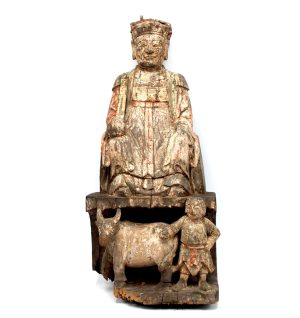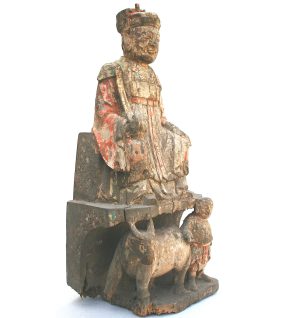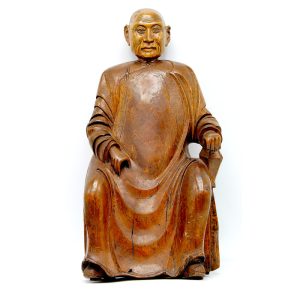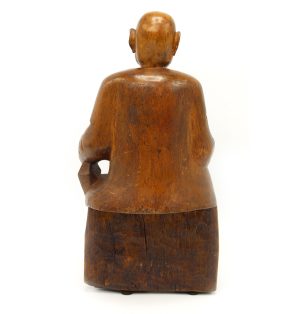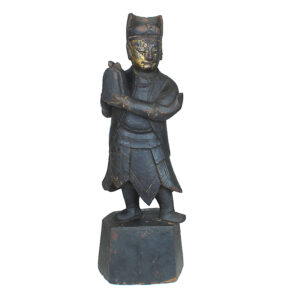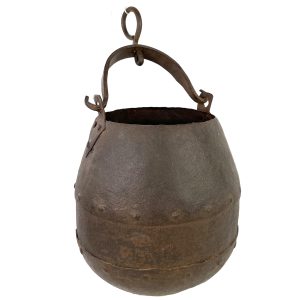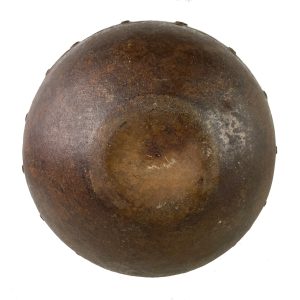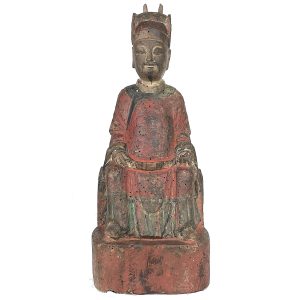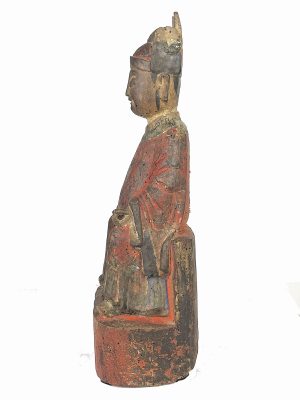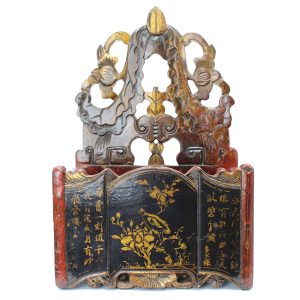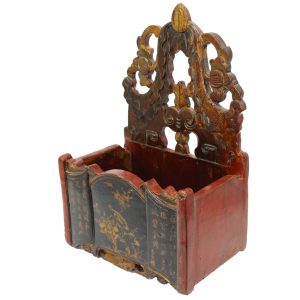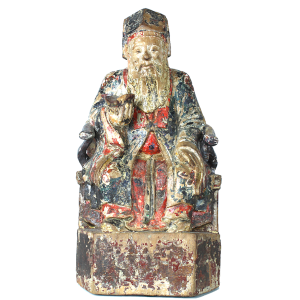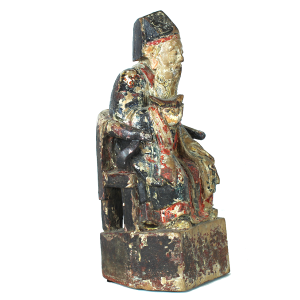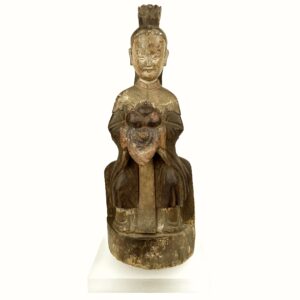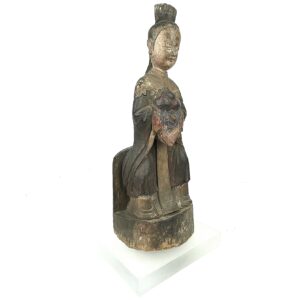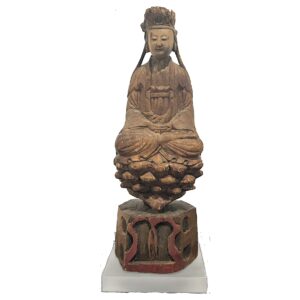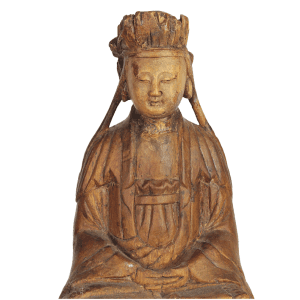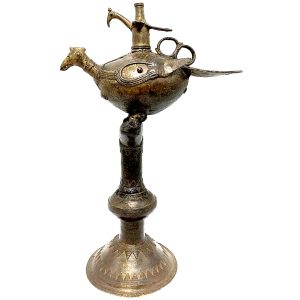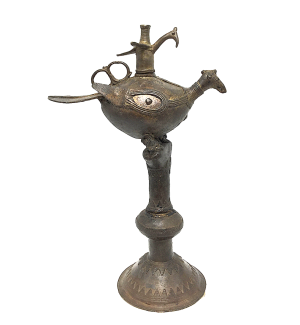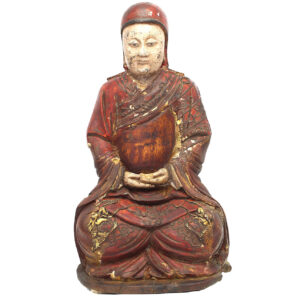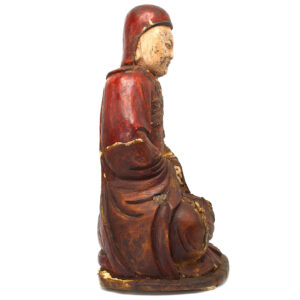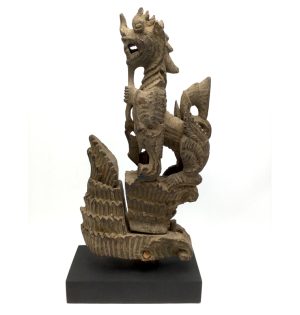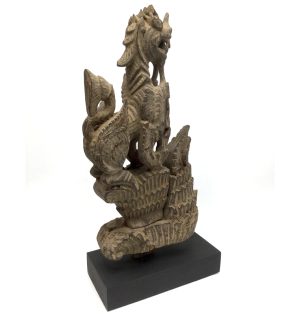Showing 1–12 of 45 results
-
Sale!


$885.00 Original price was: $885.00.$650.00Current price is: $650.00.
H: 14.25″ W: 7.125″ D: 4.8″ | FREE SHIPPING WITHIN CONTINENTAL U.S.
Extremely rare provincial carving with a Taoist official on top above the legendary “Spring Ox,” accompanied by the Taoist Earth God “Herd Boy” who each spring ritually “wakes up the earth” by symbolically beating the Spring Ox with sticks.
-
Sale!


$785.00 Original price was: $785.00.$575.00Current price is: $575.00.
H: 10.25” W: 5.125” D: 4” | FREE SHIPPING WITHIN continental us
This very finely carved figure of an ancestor was commissioned by a family of either high status or wealth, having been fashioned from a single piece of an exquisite and rare hardwood with a lustrous patina.
-
Sale!


$435.00 Original price was: $435.00.$365.00Current price is: $365.00.
H: 15.5″. W: 5.5″. D: 4.24″ | FREE SHIPPING WITHIN CONTINENTAL U.S.
Taoist attendant holding an offerings tied with ribbons that symbolized longevity for generations. Some gilt and lacquer has naturally darkened from years age and incense.
-
Sale!


$150.00 Original price was: $150.00.$85.00Current price is: $85.00.
H: 12.75″ Dia: 7″ | FREE SHIPPING IN CONTINENTAL U.S.
Simple attractive antique welded Indian iron pot with warm rust color patina. Clear lines indicate where pieces were joined in its construction. Egg shape with a rounded bottom for easy pouring, it has a warmth to add charm to any room, especially a kitchen or filled with dried flowers.
-
Sale!


$395.00 Original price was: $395.00.$295.00Current price is: $295.00.
H: 13.75″ W: 5.25″ D: 4″ | FREE SHIPPING WITHIN CONTINENTAL U.S.
This ancestor figure portrayed as a Chinese civilian official honors the family with his sign of high status. He grasps his official’s belt, his red robes symbolize fu for auspicious blessings. Unlike many serious officials he is approachable, with a smiling face.
-
Sale!


$350.00 Original price was: $350.00.$295.00Current price is: $295.00.
H: 10.75″ W: 7″ D: 4.5″ | CALL 213-568-3030 OR EMAIL [email protected] FOR SHIPPING.
The auspicious symbols on this charming document holder which are puns for “harmony and unity in marriage” indicate it was it was probably a wedding gift. And would serve that purpose admirably today as a decorative practical accessory and something you won’t find on a wedding registry.
-
Sale!


$775.00 Original price was: $775.00.$495.00Current price is: $495.00.
H: 12.125″ W: 6.125″ D: 4.125a” | FREE SHIPPING WITHIN CONTINENTAL U.S.
Tudi Gong in horseshoe chair with typical kindly face, flowing beard, officials-attire: high hat, double waist belt, red color, holding a tael gold bar as wish for wealth. Most popular rural deity who protects small towns, residents and agriculture.
-
Sale!


$595.00 Original price was: $595.00.$450.00Current price is: $450.00.
H: 15.5″ W: 7″ D: 4.5″ | FREE SHIPPING WITHIN CONTINENTAL U.S.
Reverent female Taoist attendant holding offering plate of 3 dumplings or fruits symbolizing 3 ancient gold or silver coins as a symbol of wealth and a wish for passing 3 imperial examination levels to assure the family’s status and financial stability.
-
Sale!


$695.00 Original price was: $695.00.$525.00Current price is: $525.00.
H: 14.5” W: 5.5” D: 4.25” | FREE SHIPPING within continental u.s.
Guanyin’s elegance, compassion and serenity are emphasized in this provincial carving on 3 tiered high lotus throne on a hexagonal base with carved patterns. Portrayed in meditation with flowing robes this consecrated image was designed for personal veneration in a home setting.
-
Sale!


$365.00 Original price was: $365.00.$325.00Current price is: $325.00.
H: 13″ W: 8.5″ D: 4.75″ | CALL 213-568-3030 OR EMAIL [email protected] FOR SHIPPING.
Graceful peacock oil lamp for Hindu ritual home altar prayers signifying purity, virtuosity, goodness, good luck. Large peacock is reservoir for oil, smaller peacock the lamp’s lid. Peacocks symbolize love, joy, peace and harmony.
-
Sale!


$695.00 Original price was: $695.00.$495.00Current price is: $495.00.
H: 13.25″ W: 7.5″ | D: 6.25″ FREE SHIPPING WITHIN CONTINENTAL U.S.
Provincial Lohan meditating wearing monks robes associated with Lohans – hood, shoulder ring and cowl crossed at the neck but atypically decorated with raised curvilinear lacquer designs highlighted with gilt.
-


$325.00
H: 14.5” W: 17.75” D: 3.375” | FREE SHIPPING WITHIN CONTINENTAL U.S.!
Finely carved figures were attached to ox cart yokes to protect farmers from malevolent spirits who inhabited all seen/unseen sectors of their world. . This beautifully carved ox cart yolk image is a chinthe, a mythical Burmese lion/dragon creature commonly decorating many everyday items. A propitious spiritual and protective guardian, the animalsymbolizes power, courage, and strength. This carving displays the common traits of a lions with a long face, large eyes, a long sharp nose, a lion-like beard, and a flame-like shape on the top of his head. Masterfully carved with careful attention to details, see the deeply incised hairs that cover his body. The 2-part piece is held together with a wooden plug. Though for daily use, Burmese craftsmen created beautiful objects and finished them with the best materials they could afford.
End of content
End of content

